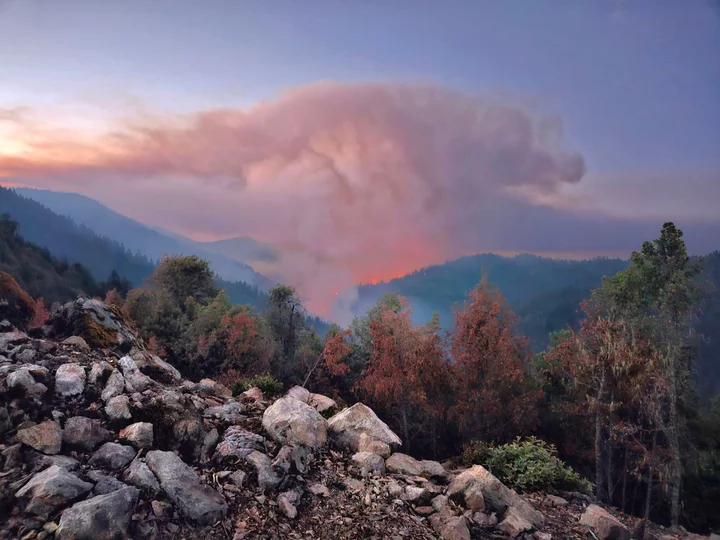Photo: Hill Fire Incident Command Flickr
Last night, incident commanders and personnel working the Hill Fire hosted a community meeting at the Willow Creek Bible Church to provide updates on the blaze that began July 15.
As of last night, the fire was 7,050 acres at 14% containment, according to Operations Section Chief Kerri Williamson.
The outlook provided was largely positive, but presenters stressed that July is early days in the fire season. Six Rivers Forest Supervisor Ted MacArthur made clear that conditions remain toasty.
“This has been very robust fire behavior conditions for this time of year considering the type of winter we had,” he said. “It’s been hot and it’s dry and it’s still July, we’ve got several months in front of us.”
The first presentation of the night was an operational update from Deputy Operations Section Chief Loren Monsen, who said the southern end of the fire has been “holding”; the western border, moving up toward Spike Buck Mountain, is looking “really good”; and the fire’s northern border is also holding and looking really good.
After Monsen, Williamson spoke about a half-acre spot fire yesterday evening near the fire’s northeast boundary and trees that ignited Tuesday on the eastern front that resulted in spread toward Sugarloaf Mountain. Williamson said helicopters and aircraft carrying retardant were utilized all of yesterday in spot fire containment efforts.
Incident Meteorologist James White, whose role is to provide localized weather information and forecasts to aid strategy (which he is accomplishing in part through launching weather balloons), and Fire Behavioral Analyst Kevin Osborne then spoke on the conditions experienced thus far and gave an outlook for the next few days.
White noted that some weather stations locally – including in Hoopa and Willow Creek – saw the highest temperatures ever recorded during the early July heatwave which, combined with lightning and strong winds, led to the fire’s early activity.
He said that lower temperatures and more moisture are expected to help firefighters out through next week.
Osborne’s presentation concurred. He shared that while the fire danger index in the days preceding the lightning storm that ignited the blaze set all-time records, which allowed the fire to grow as fast as it did, the coming days look good.
Like MacArthur, Osborne also noted that fire conditions remain “robust” for July.
“We’re not out of the woods yet, we’re early in the season,” he said.
Osborne also pointed out that the blaze’s positioning between Mosquito Creek and the South Fork of the Trinity River, both of which have strong winds, has presented added challenges in containment. Spot fires remain the largest concern, according to Osborne.
Fifth District County Supervisor Steve Madrone, who attended the meeting virtually, chimed in to ask for a round of applause for the firefighters and other personnel before Unified Incident Commander Rocky Opliger closed presentations by thanking the community for the welcoming reception firefighters in town have received.
Questions from the audience that followed the presentations focused primarily on evacuation orders and structure protection.
“We have a lot of elderly people, we have a lot of people without a lot of income that just need some help and they need to know that someone’s going to be there,” one speaker said, adding that the lack of communication he said he’s experienced around structure protection for properties under evacuation orders has been “a little disconcerting.”
Williamson explained that additional evacuation orders were put in place when the fire moved toward Sugarloaf and said that Unified Command does have a structure protection plan in place.
The ongoing Hill Fire response is a unified Cal Fire and the Forest Service effort that currently involves 1,920 personnel.
Last night’s meeting was live streamed on Facebook, and the video can be found here.

CLICK TO MANAGE